Spot the Bird: Horizontal Napping Bark
Some birds really do not want to be seen, like certain mothy-plumaged nocturnals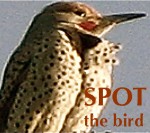 . With their barred and mottled markings, owls and nightjars can blend in day or night with any old thing: bark, stump, or rock. Owls are inclined to hide by perching upright against a trunk — Vertical Napping Bark — while nightjars (nighthawks, whip-poor-wills, and their relatives) often lie flush along a branch — Horizontal Napping Bark.
. With their barred and mottled markings, owls and nightjars can blend in day or night with any old thing: bark, stump, or rock. Owls are inclined to hide by perching upright against a trunk — Vertical Napping Bark — while nightjars (nighthawks, whip-poor-wills, and their relatives) often lie flush along a branch — Horizontal Napping Bark.
Below is some prime Horizontal Napping Bark for you, a Lesser Nighthawk E and I flushed off a desert trail early one morning while hiking. As we approached unknowing, it flew a scant dozen meters away and settled motionless in the middle of a mesquite tangle. We’d seen it land, otherwise we’d never have known it was there. Go ahead, Spot the Bird! Click on the image to enlarge it — it’s still hard to spot.
Lesser Nighthawks (Chordeiles acutipennis) are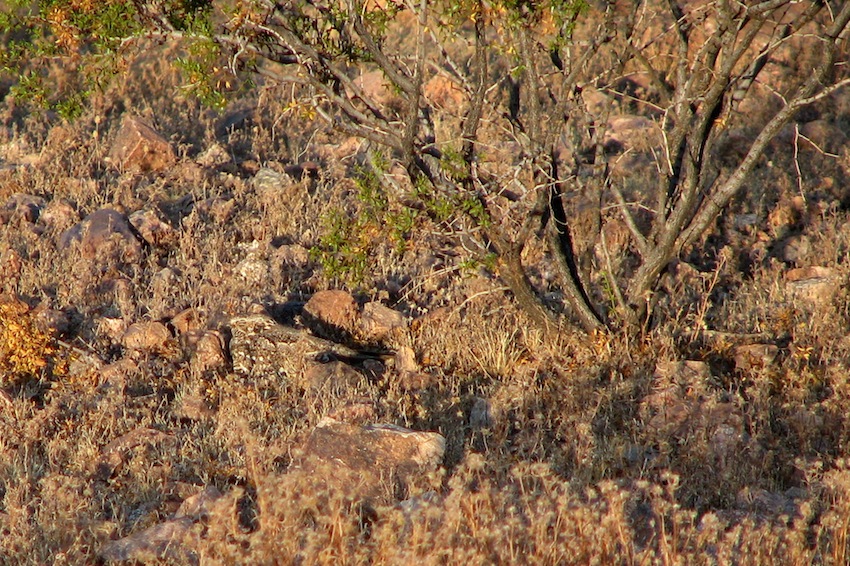 so confident in their camo that they nest out in the open, on rocky desert ground. Here’s one >> trusting to her mottliness to keep from being discovered incubating two eggs in Papago Park. Nesting sites must be chosen carefully to minimize the risk of being accidentally stepped on. Like other camo-reliant ground-nesters such as Killdeer, a Lesser Nighthawk mama will sit tight until the last minute of interloper’s approach (“crouch concealment”), than launch into a wing-fluttering display (“distress simulation”) to distract and draw away the looming threat. If distraction isn’t possible, they will become threatening, by puffing up and gaping their large pink mouths while hissing like a snake.
so confident in their camo that they nest out in the open, on rocky desert ground. Here’s one >> trusting to her mottliness to keep from being discovered incubating two eggs in Papago Park. Nesting sites must be chosen carefully to minimize the risk of being accidentally stepped on. Like other camo-reliant ground-nesters such as Killdeer, a Lesser Nighthawk mama will sit tight until the last minute of interloper’s approach (“crouch concealment”), than launch into a wing-fluttering display (“distress simulation”) to distract and draw away the looming threat. If distraction isn’t possible, they will become threatening, by puffing up and gaping their large pink mouths while hissing like a snake.
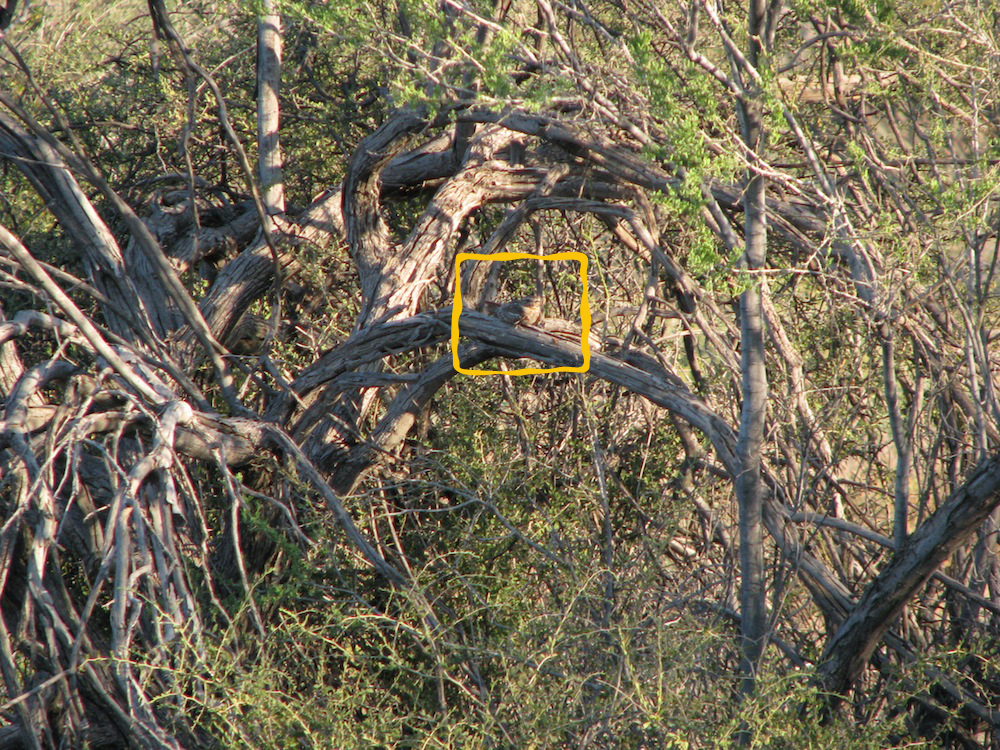 If you need a bit of help finding the Horizontal Napping Bark/Kipping Cobble in the photos, here are the keys, with the birds inside the wavery yellow boxes.
If you need a bit of help finding the Horizontal Napping Bark/Kipping Cobble in the photos, here are the keys, with the birds inside the wavery yellow boxes.
They’re both large files, so click to enlarge (both photos A.Shock).
And, watch your step!

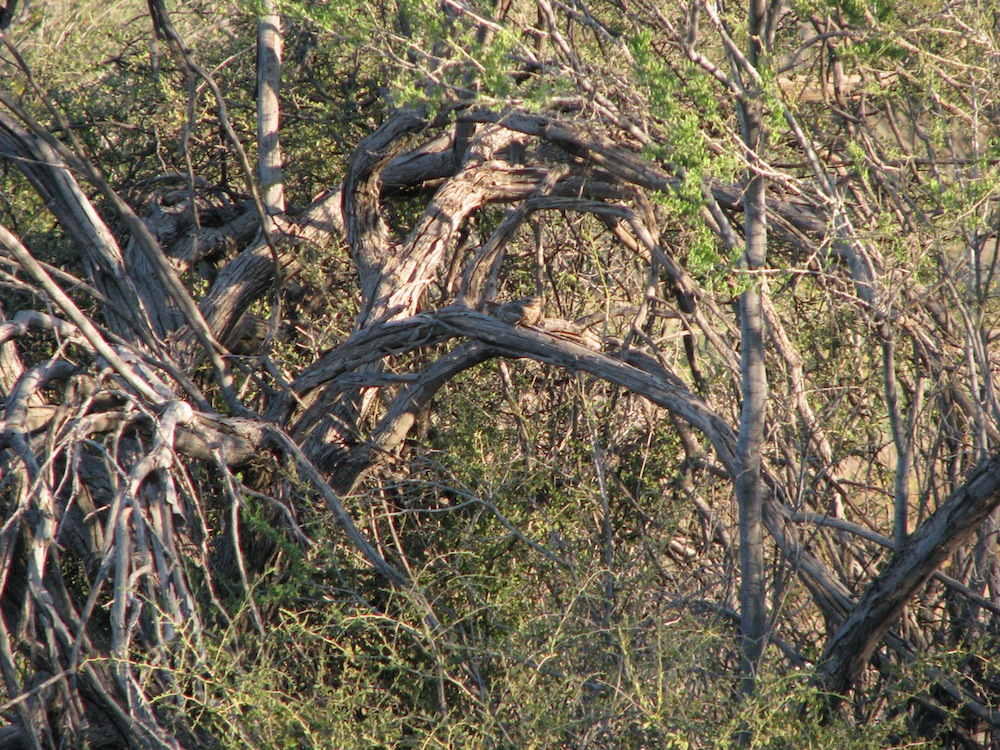
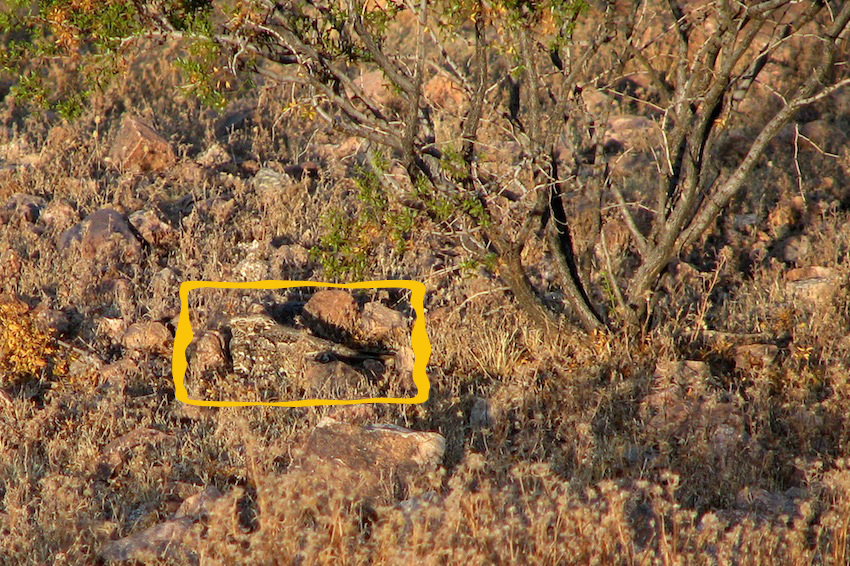
[…] Spot the Bird: horizontal napping bark the second […]